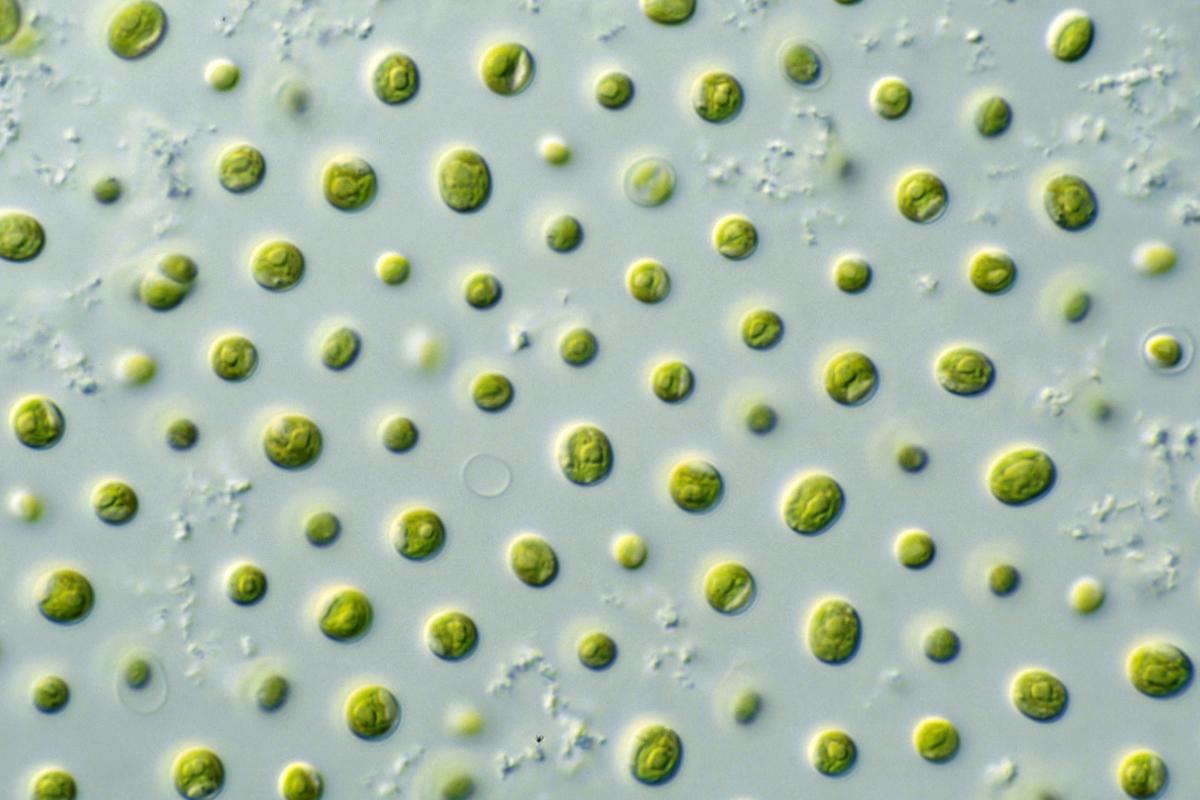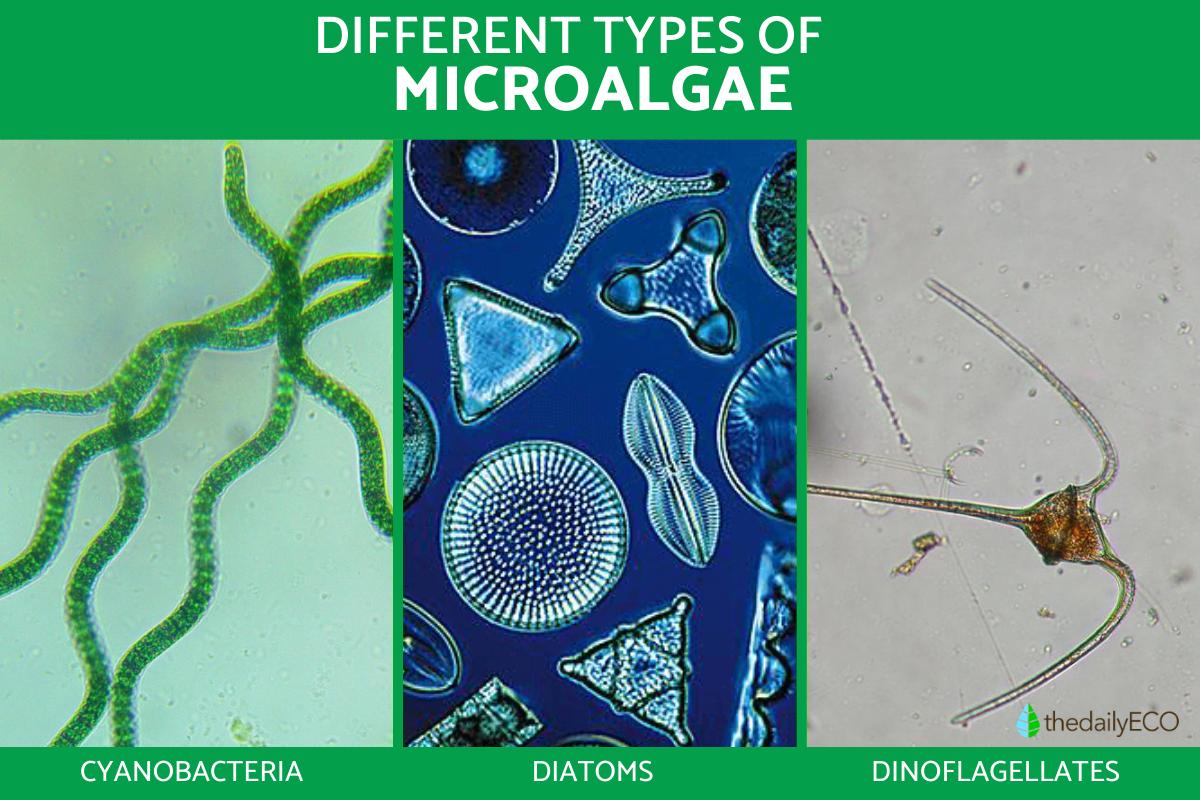What Are Microalgae?


Explore the fascinating world of microalgae, a diverse and intricate realm teeming with tiny yet extraordinary organisms. Despite their diminutive size, these microorganisms hold immense significance in shaping our planet's ecosystems and supporting life as we know it. From environmental sustainability to nutrition, biofuels, and beyond, the potential of microalgae is as vast as the oceans they inhabit.
In the following article by thedailyECO, we explore what microalgae are, their most important characteristics, and the myriad benefits they offer to both nature and humankind.
What are microalgae?
Microalgae, an intriguing group of microorganisms belonging to the kingdom Protista, possess remarkable capabilities with numerous benefits.
They are mostly photosynthetic, utilizing sunlight as an energy source, and can be as small as 2 to 200 µm in size. Their photosynthetic efficiency can even surpass that of plants, making them efficient converters of sunlight into energy.
These microscopic wonders have a swift life cycle, completing it in just hours, and can reproduce both sexually and asexually through binary fission or mitosis.
They demonstrate adaptability by tolerating a wide range of conditions, enabling them to thrive in various habitats, including bodies of water such as lakes, seas, and rivers, as well as in terrestrial and extreme areas like ice and deserts.
Microalgae play a vital ecological role as the primary producers of organic matter, forming the foundation of trophic chains and serving as essential food sources for other species in ecosystems. Additionally, their ability to contain reserve substances, like lipids, carbohydrates, and proteins, adds to their versatility and potential applications.
Despite their significance, much remains to be explored, as only a fraction of the estimated 30,000 microalgae species has been studied. These microorganisms hold immense promise for diverse applications, including biofuel production, water purification, and more.
If you have an interest in delving into the diverse world of microbiomes, make sure to explore our other article, where we provide a comprehensive explanation of the various types of microbiomes.
Examples of microalgae
Now that you have gained an understanding of what microalgae are, let's take a closer look at some specific microalgae species that hold immense significance in various fields. These tiny organisms play pivotal roles in nutrition, biotechnology, and environmental sustainability, showcasing their versatility and importance in shaping our world:
Cyanobacteria (class Cyanophyceae)
Also known as blue-green algae, these primitive microorganisms were instrumental in generating Earth's oxygen-rich atmosphere. Despite not being classified as algae taxonomically, they are grouped under microalgae due to similar characteristics. Cyanobacteria are responsible for algal blooms in eutrophication zones, where excess nutrients like nitrogen and phosphorus lead to their massive proliferation. These blooms can negatively impact ecosystems by altering water quality and producing toxic substances harmful to human and animal health.
Diatoms (class Bacillariophyceae)
Found in both fresh and saltwater, diatoms are abundant phytoplankton and play a crucial role in fixing 25% of the total carbon in the oceans annually. They serve as essential food sources for Antarctic krill, which, in turn, sustain numerous fish, whales, and birds in the marine trophic chain. Diatomaceous earth, derived from these microalgae, is widely used in gardening and agriculture.
Dinoflagellates (class Dinophyceae)
Highly abundant in marine phytoplankton, dinoflagellates create a visually striking phenomenon known as bioluminescence. Their enzyme luciferase allows them to emit colorful flashes of blue or red light under dark conditions and mechanical stimulation. Dinoflagellates are crucial in the formation of coral reefs, as certain types called zooxanthellae live in symbiotic association with corals, providing them with oxygen and sustenance while receiving CO2 and a sheltered environment in return.
Chlorella (genus Chlorella)
Chlorella is a single-celled, green microalga that has gained popularity for its potential as a nutritional supplement due to its high protein content, essential amino acids, vitamins, and minerals. It is also known for its ability to grow rapidly and convert CO2 into biomass, making it a promising candidate for biofuel production and carbon sequestration.
Spirulina (genus Arthrospira)
Spirulina is another well-known microalga that has gained recognition for its nutritional value. It is rich in protein, vitamins, minerals, and antioxidants, making it a popular dietary supplement and food source, especially for vegetarians and vegans. Spirulina is cultivated commercially and can be consumed as a dried powder or in tablet form.
If you're eager to discover more about spirulina and its incredible benefits, don't miss our other article dedicated to explaining what spirulina is, its unique properties, and the numerous health benefits it offers.
These microalgae showcase the immense diversity and importance of these tiny organisms in supporting various ecological functions and life forms, underscoring their significance in maintaining the delicate balance of our planet's ecosystems.

Importance of microalgae
Microalgae hold intrinsic value in ecosystems, contributing to biodiversity, forming the basis of food chains, and playing a crucial role in fixing atmospheric CO2, thus mitigating greenhouse gas emissions. Beyond their ecological significance, human societies can derive numerous advantages from microalgae production, thanks to their rapid reproduction rate and minimal space and substrate requirements.
Some key benefits include:
- Bioremediation: microalgae are employed to purify domestic, animal, and industrial wastewater by removing chemicals like pesticides, herbicides, heavy metals, and nutrients. Through metabolism, microorganisms assimilate these substances without losing their biological activity, generating substantial biomass that finds application in various industries, including cosmetics, fertilizers, and even 3D printing.
- Fuels: with their high lipid content, microalgae biomass becomes a valuable source for producing biodiesel, bioethanol, and methane. This alternative to fossil fuels offers a renewable, biodegradable option that does not emit CO2 into the atmosphere.
- Aquaculture: microalgae production directly serves as a nutritious food source for commercially important species like molluscs, crustaceans, and certain fish, supporting sustainable aquaculture practices.
- Agriculture: certain microalgae, notably cyanobacteria, can be utilized as biofertilizers, effectively fixing nitrogen in crop fields and substituting conventional chemical fertilizers.
- Chemical and food industry: the diverse chemical composition of various microalgae species allows for the extraction of substances of commercial interest, including vitamins, pigments, amino acids, polysaccharides, enzymes, and essential fatty acids, among others. These valuable compounds find application in the chemical and food industries.
Did you know that the phenomenon known as the red tide is caused by the rapid and dense accumulation or bloom of certain species of microalgae? If you're curious to learn more about red tides, their causes, and their impact, check out our other article.
If you want to read similar articles to What Are Microalgae?, we recommend you visit our Biology category.
- Abalde J, Cid A, Fidalgo JP, Torres E and Herrero C. (1995). Microalgae: Cultivation and Applications . University of A Coruña. Available at: https://doi.org/10.17979/spudc.9788497497695
- Dreckmann KM, Sentíes A, Núñez ML. (2013). Algae Biology Laboratory Practice Manual . Metropolitan Autonomous University. Iztapalapa, Mexico.
- Illana C. (2008). Industrial uses of diatom algae s. Quercus 267: 32-37. Available at: https://www.researchgate.net/publication/286453161_Usos_industriales_de_las_algas_diatomeas
- Montero-Sánchez Y, Gallo A, Gómez LM, Álvarez I, Sabina LC, Támbara Y, Álvarez A, Alfonso MC and Ramírez LR. (2012). Lipid productivity and fatty acid composition of five species of microalgae . Investigation and Knowledge 1(2): 37-43.
- Ortiz-Villota MT, Romero-Morales MA, and Meza-Rodríguez LD. (2018). Bioremediation with microalgae (Spirulina maxima, Spirulina platensis and Chlorella vulgaris) as an alternative to treat eutrophication in the Ubaque lagoon, Colombia . Research, Development and Innovation Journal 9(1): 163-176. Available at: http://www.scielo.org.co/pdf/ridi/v9n1/2389-9417-ridi-9-01-163
- Perez FG. (2015). Diversity and biogeography of marine dinoflagellates: notes on the taxonomy of some of the lesser-known groups . PhD thesis. Complutense University of Madrid






